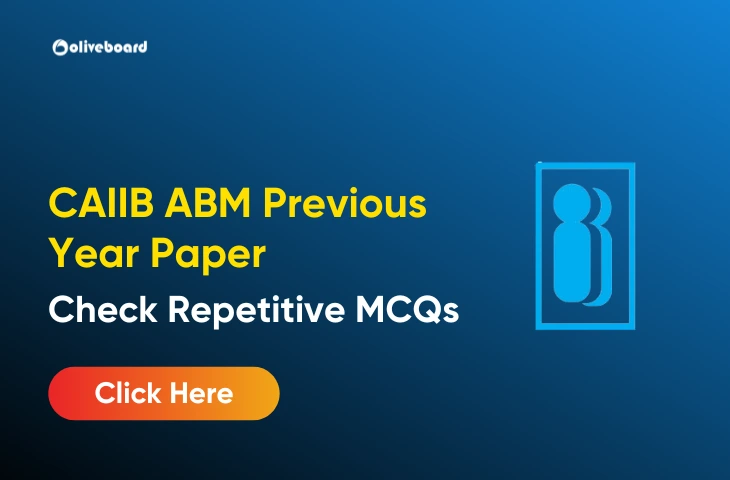CAIIB ABM Previous Year Paper
CAIIB ABM Previous Year Paper is an essential resource for candidates preparing for the CAIIB exam. Understanding the most commonly asked questions and the structure of the exam can significantly improve your performance. In this article, we will dive into the topics covered in the CAIIB ABM Previous Year Paper and highlight the most repetitive MCQs to help you prepare effectively.
CAIIB ABM Exam – Overview
The CAIIB exam is designed for professionals in the banking industry who want to enhance their skills and knowledge. Paper 1 of the CAIIB exam, Advanced Bank Management (ABM), consists of four modules:
- Module A: Statistics
- Module B: Human Resource Management (HRM)
- Module C: Credit Management
- Module D: Compliance in Banks and Corporate Governance
CAIIB ABM Previous Year Paper
CAIIB ABM Previous Year Paper is a valuable resource for understanding exam patterns and frequently asked questions. It helps in improving time management and reinforcing key concepts for better exam performance.
- What is the primary purpose of risk management in banking?
a) To increase profits
b) To minimize losses
c) To improve customer satisfaction
d) To expand market share
Answer: b) To minimize losses - Which of the following is NOT a type of financial risk?
a) Market risk
b) Operational risk
c) Credit risk
d) Systematic risk
Answer: d) Systematic risk - Which approach is used to measure market risk?
a) VaR (Value at Risk)
b) NPV (Net Present Value)
c) IRR (Internal Rate of Return)
d) CAPM (Capital Asset Pricing Model)
Answer: a) VaR (Value at Risk) - Operational risk includes risks due to:
a) Credit default
b) Market fluctuations
c) Human errors and frauds
d) Foreign exchange movements
Answer: c) Human errors and frauds - The Basel framework primarily addresses which type of risk?
a) Operational risk
b) Credit risk
c) Market risk
d) All of the above
Answer: d) All of the above
- The Weighted Average Cost of Capital (WACC) is calculated by:
a) Adding equity and debt capital costs
b) Taking a weighted average of equity and debt capital costs
c) Using only equity capital costs
d) Using only debt capital costs
Answer: b) Taking a weighted average of equity and debt capital costs - What is the primary objective of capital budgeting?
a) Managing operational cash flow
b) Selecting long-term investment projects
c) Managing day-to-day financial operations
d) Reducing tax liabilities
Answer: b) Selecting long-term investment projects - Which formula is used to calculate NPV (Net Present Value)?
a) Future value – Present value
b) Sum of discounted cash flows – Initial investment
c) IRR × Investment cost
d) WACC × Capital expenditure
Answer: b) Sum of discounted cash flows – Initial investment - The Payback Period measures:
a) The time required to recover the initial investment
b) The profitability of a project
c) The rate of return of a project
d) The cost of capital
Answer: a) The time required to recover the initial investment - IRR is the discount rate at which:
a) NPV equals zero
b) Payback period equals zero
c) Cash inflows are maximized
d) Profitability index equals one
Answer: a) NPV equals zero
- Which of the following is NOT part of credit risk assessment?
a) Borrower’s repayment capacity
b) Borrower’s income sources
c) Market fluctuations
d) Borrower’s credit history
Answer: c) Market fluctuations - Which financial ratio is important for evaluating a borrower’s liquidity?
a) Debt-to-equity ratio
b) Current ratio
c) Return on equity
d) Gross profit margin
Answer: b) Current ratio - What is a primary security in loan agreements?
a) A collateral asset
b) A legal document
c) The main asset being financed
d) A co-guarantor’s asset
Answer: c) The main asset being financed - The concept of 5Cs of credit includes all EXCEPT:
a) Capacity
b) Character
c) Collateral
d) Currency
Answer: d) Currency - The Debt Service Coverage Ratio (DSCR) measures:
a) Debt repayment ability of a company
b) Profitability of a project
c) Operational efficiency of a business
d) Cash reserves of a bank
Answer: a) Debt repayment ability of a company
- What is the main function of monetary policy?
a) To increase tax revenues
b) To control inflation and manage liquidity
c) To promote exports
d) To regulate foreign investments
Answer: b) To control inflation and manage liquidity - What does CRR stand for in banking?
a) Credit Risk Ratio
b) Cash Reserve Ratio
c) Current Revenue Ratio
d) Collateral Risk Ratio
Answer: b) Cash Reserve Ratio - Repo rate is:
a) The rate at which banks borrow from RBI
b) The rate at which banks lend to RBI
c) The interest rate on fixed deposits
d) The rate charged on home loans
Answer: a) The rate at which banks borrow from RBI - GDP measures the:
a) Total imports and exports
b) Total value of goods and services produced in a country
c) Average income of citizens
d) Inflation rate
Answer: b) Total value of goods and services produced in a country - What is fiscal deficit?
a) The shortfall in tax collection
b) The excess of government expenditure over revenue
c) The difference between GDP and GNP
d) The difference between exports and imports
Answer: b) The excess of government expenditure over revenue
- If a project has cash inflows of ₹500,000, ₹600,000, and ₹700,000 for three years and the initial investment is ₹1,200,000, what is the payback period?
a) 2 years
b) 2.5 years
c) 3 years
d) 1.5 years
Answer: b) 2.5 years - A loan of ₹10,00,000 is given at an interest rate of 12% per annum for 3 years. What will be the total interest paid?
a) ₹3,60,000
b) ₹2,40,000
c) ₹1,20,000
d) ₹6,00,000
Answer: a) ₹3,60,000 - Calculate the DSCR if Net Operating Income = ₹5,00,000 and Total Debt Servicing = ₹4,00,000.
a) 0.8
b) 1.25
c) 1.5
d) 2.0
Answer: b) 1.25
- Which of the following is considered a non-fund-based credit facility?
a) Cash credit
b) Term loan
c) Letter of credit
d) Overdraft
Answer: c) Letter of credit - What is the main function of an investment bank?
a) To manage savings accounts
b) To provide retail banking services
c) To underwrite securities and assist in raising capital
d) To provide short-term loans to businesses
Answer: c) To underwrite securities and assist in raising capital - In which of the following, a bank’s own funds are used?
a) Term loans
b) Advances
c) Non-fund-based facilities
d) Securities
Answer: b) Advances - What is the role of a bank’s treasury?
a) To manage the bank’s cash reserves
b) To monitor the performance of loans
c) To invest in long-term securities
d) To maintain customer accounts
Answer: a) To manage the bank’s cash reserves - The duration of a letter of credit is determined by:
a) The exporter
b) The bank issuing the credit
c) The importer
d) Both exporter and importer
Answer: b) The bank issuing the credit - The main purpose of KYC (Know Your Customer) is to:
a) Prevent fraud
b) Ensure customer loyalty
c) Verify customer identity and assess risk
d) Increase the bank’s profitability
Answer: c) Verify customer identity and assess risk - What is the main objective of asset-liability management (ALM) in banks?
a) Maximizing profits
b) Managing liquidity and mitigating interest rate risks
c) Increasing market share
d) Reducing operational costs
Answer: b) Managing liquidity and mitigating interest rate risks
- Which of the following regulations ensures that banks maintain a minimum level of capital?
a) Basel III
b) The Negotiable Instruments Act
c) The Banking Regulation Act
d) The Companies Act
Answer: a) Basel III - The Banking Regulation Act governs:
a) Financial institutions and insurance companies
b) The operation of cooperative banks only
c) Commercial banking activities in India
d) Non-banking financial companies (NBFCs)
Answer: c) Commercial banking activities in India - Under which law can the Reserve Bank of India (RBI) issue directives to commercial banks regarding their operations?
a) The Reserve Bank of India Act, 1934
b) The Banking Regulation Act, 1949
c) The Companies Act, 1956
d) The Foreign Exchange Management Act (FEMA)
Answer: b) The Banking Regulation Act, 1949 - What is the maximum period for which a customer can request a “stop payment” order for a cheque under banking regulations?
a) 6 months
b) 1 year
c) 3 months
d) 5 years
Answer: c) 3 months - Which of the following acts governs the issue and transfer of negotiable instruments in India?
a) The Banking Regulation Act
b) The Negotiable Instruments Act, 1881
c) The Reserve Bank of India Act, 1934
d) The Companies Act, 2013
Answer: b) The Negotiable Instruments Act, 1881
- What is the primary function of a mutual fund?
a) To provide loans to small businesses
b) To pool money from investors and invest in securities
c) To issue debt instruments to the public
d) To offer credit cards to consumers
Answer: b) To pool money from investors and invest in securities - Which of the following is NOT a type of insurance provided by banks?
a) Life insurance
b) Health insurance
c) Asset insurance
d) Land ownership insurance
Answer: d) Land ownership insurance - Which type of loan is used to finance long-term fixed assets, such as machinery or equipment?
a) Working capital loan
b) Home loan
c) Term loan
d) Cash credit
Answer: c) Term loan - Which of the following is an example of an investment banking service?
a) Providing personal loans
b) Managing retirement funds
c) Underwriting new issues of shares and bonds
d) Offering home loans
Answer: c) Underwriting new issues of shares and bonds - Which type of account is typically used by a business to deposit and withdraw money on a daily basis?
a) Fixed deposit account
b) Current account
c) Savings account
d) Recurring deposit account
Answer: b) Current account
- Which of the following is used to evaluate a company’s profitability?
a) Quick ratio
b) Gross profit margin
c) Debt-to-equity ratio
d) Current ratio
Answer: b) Gross profit margin - What does a low Current Ratio indicate?
a) The company has good liquidity
b) The company may face liquidity problems
c) The company is highly profitable
d) The company has high debt
Answer: b) The company may face liquidity problems - The Price to Earnings (P/E) ratio is primarily used to evaluate:
a) A company’s liquidity
b) The market value of a company’s shares
c) A company’s debt levels
d) A company’s dividend policy
Answer: b) The market value of a company’s shares - A positive Net Present Value (NPV) suggests that:
a) The project is unprofitable
b) The project should be rejected
c) The project will create value for the company
d) The project has no risk
Answer: c) The project will create value for the company - Which of the following ratios is used to determine the efficiency of a company in managing its working capital?
a) Return on Assets
b) Return on Equity
c) Working Capital Turnover Ratio
d) Earnings Before Interest and Taxes (EBIT)
Answer: c) Working Capital Turnover Ratio
- Which technology is used for enabling real-time gross settlement (RTGS) in India?
a) Blockchain
b) SWIFT
c) NEFT
d) RTGS
Answer: d) RTGS - The process of encryption ensures that:
a) Customer transactions are processed quickly
b) Transaction data is secure and protected
c) Banks can verify the identity of customers
d) Banks can grant loans faster
Answer: b) Transaction data is secure and protected - Which of the following is an example of an e-banking service?
a) ATMs
b) Internet banking
c) Mobile banking
d) All of the above
Answer: d) All of the above - What is the main advantage of using cloud computing in banking?
a) Faster loan processing
b) Reduced operational costs and scalable infrastructure
c) Higher interest rates
d) Direct control over customer data
Answer: b) Reduced operational costs and scalable infrastructure - Which of the following is a feature of a core banking system?
a) Allows customers to access their accounts from anywhere
b) Allows banks to create financial products
c) Manages the bank’s investment portfolio
d) Only used for international transactions
Answer: a) Allows customers to access their accounts from anywhere
Top Topics to Focus On from CAIIB ABM Previous Year Paper
Here are the top topics to focus on from the CAIIB ABM Previous Year Papers, based on the syllabus and exam trends:
1. Statistics (Module A)
- Sampling Techniques: Random sampling, Sampling distributions, Central Limit Theorem, Sampling from normal and non-normal populations.
- Measures of Central Tendency and Dispersion: Arithmetic Mean, Geometric Mean, Harmonic Mean, Median, Mode, Quartiles, Standard Deviation, Coefficient of Variation, Skewness, and Kurtosis.
- Time Series Analysis: Trend analysis, Cyclical, Seasonal, and Irregular variations, Forecasting techniques.
- Theory of Probability: Binomial distribution, Poisson distribution, Normal distribution, Value at Risk (VaR), Credit Risk, Option Valuation.
- Estimation: Point estimates, Confidence intervals, and Interval estimates for large samples.
2. Human Resource Management (Module B)
- Fundamentals of HRM: Relationship between HRM & HRD, Strategic HRM, HR professionals’ role.
- Development of Human Resources: Learning and development, Career path planning, Talent management, Succession planning.
- Performance Management: Appraisal systems, Competency mapping, Assessment centers, Behavioral event interviews (BEI).
- Conflict Management: Conflict resolution, Negotiation skills.
- HRM and IT: HR information systems (HRIS), HR analytics, e-HRM.
3. Credit Management (Module C)
- Overview of Credit Management: Principles of credit, Types of borrowers, Credit components, RBI guidelines for credit management.
- Financial Statement Analysis: Techniques used in financial analysis, Rearranging financial statements for analysis, Creative accounting, Related party transactions.
- Working Capital Finance: Liquidity ratios, Working capital cycle, Bills/Receivables finance, TReDS.
- Risk Management: Credit risk, Mitigation steps, Credit ratings, Use of credit derivatives, RBI guidelines.
- Restructuring and Recovery: Options for stressed assets, RBI guidelines on restructuring, NPA management, Resolution under Insolvency and Bankruptcy Code (IBC).
4. Compliance in Banks and Corporate Governance (Module D)
- Compliance Function: Role of Chief Compliance Officer (CCO), Scope of compliance, Compliance principles, and procedures.
- Compliance Audit: Risk-based internal audit, Monitoring compliance, Accounting standards, SEBI disclosure requirements.
- Fraud and Vigilance: Fraud reporting and monitoring system, RBI guidelines for fraud prevention, Banking and cyber frauds.
How to Use CAIIB ABM Previous Year Papers Effectively
| Step | Action |
| Understand the Exam Pattern | Familiarize yourself with the structure and syllabus of CAIIB ABM. |
| Analyze Past Papers | Focus on the most frequently asked topics and concepts. |
| Practice Time Management | Solve papers under timed conditions to improve speed and accuracy. |
| Improve Conceptual Understanding | Review and understand concepts where mistakes were made. |
| Focus on Case Studies | Regularly practice case study-based questions to build application skills. |
| Take Mock Tests | Use previous year papers as mock exams to assess your preparation. |
| Track Your Progress | Evaluate your scores and adjust your study plan accordingly. |
| Revise Regularly | Use the papers as part of your revision strategy to reinforce concepts. |
Conclusion
The CAIIB ABM Previous Year Paper provides invaluable insights into the exam pattern and commonly asked questions. By focusing on the most repetitive MCQs and understanding the topics in detail, candidates can significantly improve their chances of success. Prepare systematically, and use this article as a guide to enhance your knowledge and boost your exam readiness.
- CAIIB Electives Exam Analysis 2025, June All Shifts Review
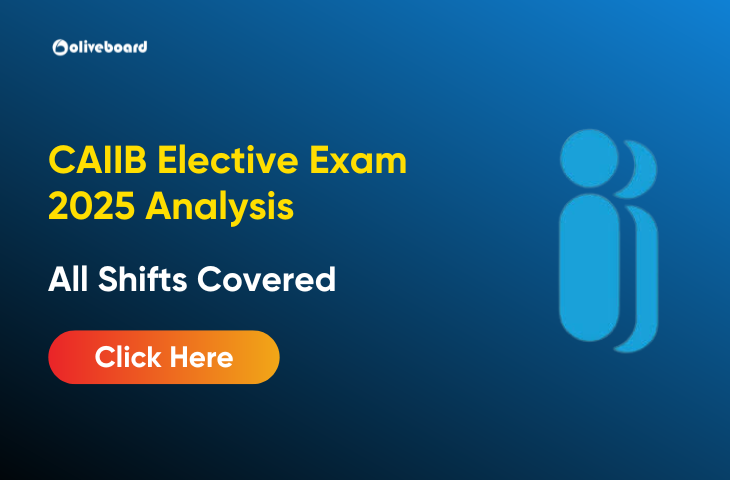
- CAIIB BRBL Exam Analysis 2025, June All Shifts Review
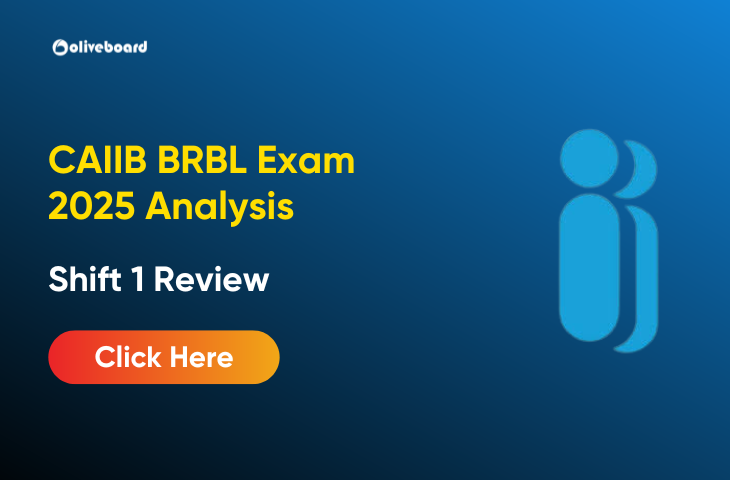
- CAIIB ABFM Exam 2025 Analysis, Shift 1 & 2 – 22nd June 2025

- CAIIB BFM Exam Analysis 2025, All Shift Analysis Released

- CAIIB ABM Exam Analysis 2025, All Shifts, May-June Cycle
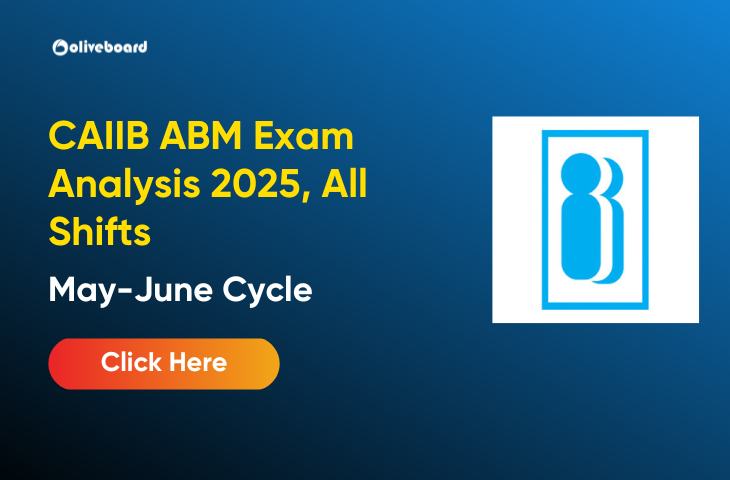
- CAIIB Admit Card 2025, Check Steps to Download Call Letter
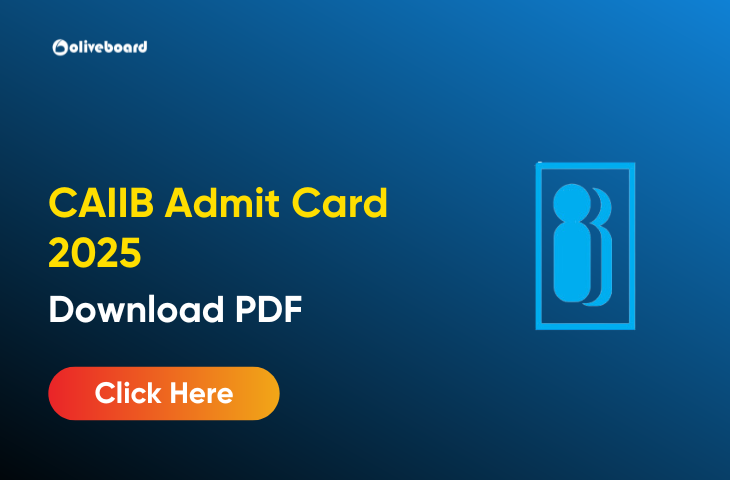

Hello there! I’m a dedicated Government Job aspirant turned passionate writer & content marketer. My blogs are a one-stop destination for accurate and comprehensive information on exams like Regulatory Bodies, Banking, SSC, State PSCs, and more. I’m on a mission to provide you with all the details you need, conveniently in one place. When I’m not writing and marketing, you’ll find me happily experimenting in the kitchen, cooking up delightful treats. Join me on this journey of knowledge and flavors!
